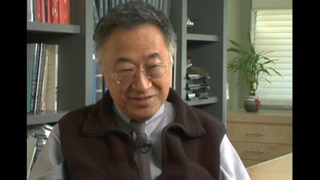Interviews
Rebuilding Japan
I don’t think they [Japanese] blamed the Americans for the occupation, the devastation and the loss that Japan suffered. They blamed the [Japanese] military vis-à-vis the Japanese government as a unit. The military is gone so they can blame them. The only thing that they blamed Americans, including us, is the use of the atomic bomb in Hiroshima, Nagasaki. But other than that, the devastation and all that, the only thing they thought about at that time, but I don’t think they were delving in the past. By that I mean they weren’t just moaning about the past. What they were thinking about what how to rebuild, how to come back. It was really gratifying to see so many people rebuilding. Of course, at that time, supplies were very short. Lumber was short, materials were short but whatever they could find they would put together and rebuild what they needed for their livelihood. And for food, they raised vegetables and scrounged around of course. Many of them, especially Japanese Americans, used to give them their rations. We got K rations. We couldn’t eat them of course, so we gave them to Japanese. The cigarettes of course we gave to the smokers among the Japanese.
Date: May 29, 2006
Location: Hawai`i, US
Interviewer: Akemi Kikumura Yano
Contributed by: Watase Media Arts Center, Japanese American National Museum











